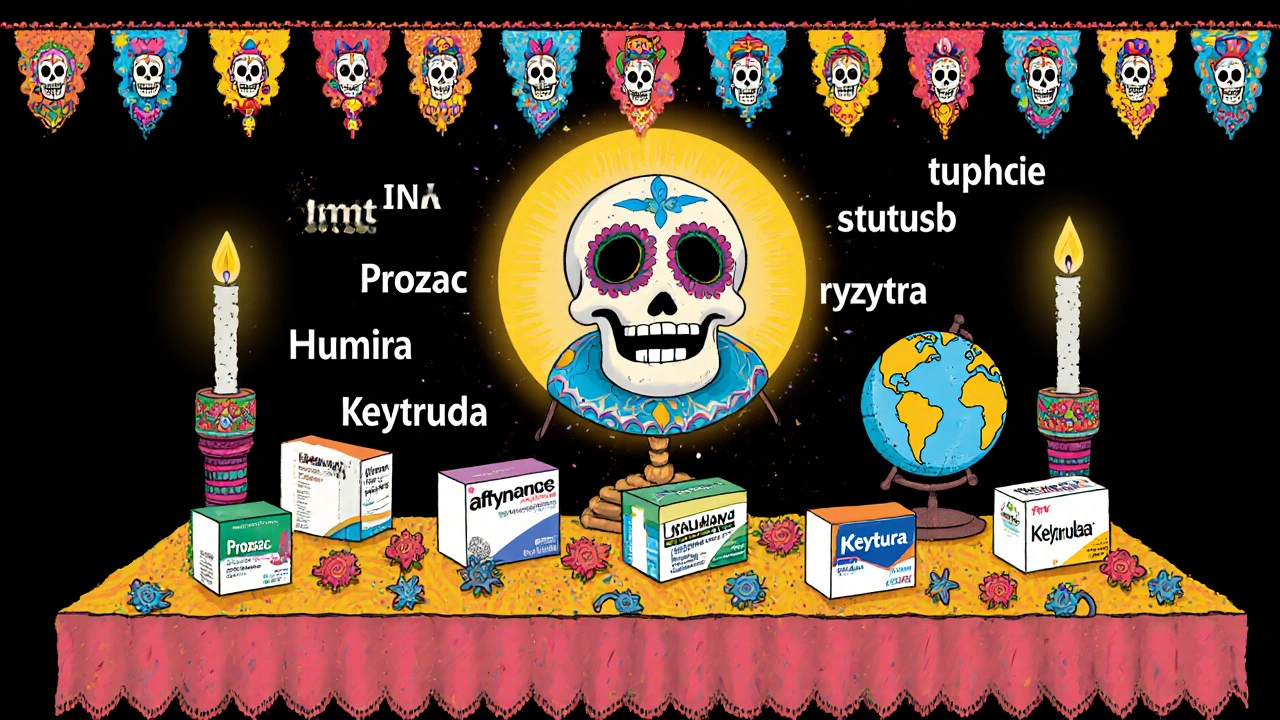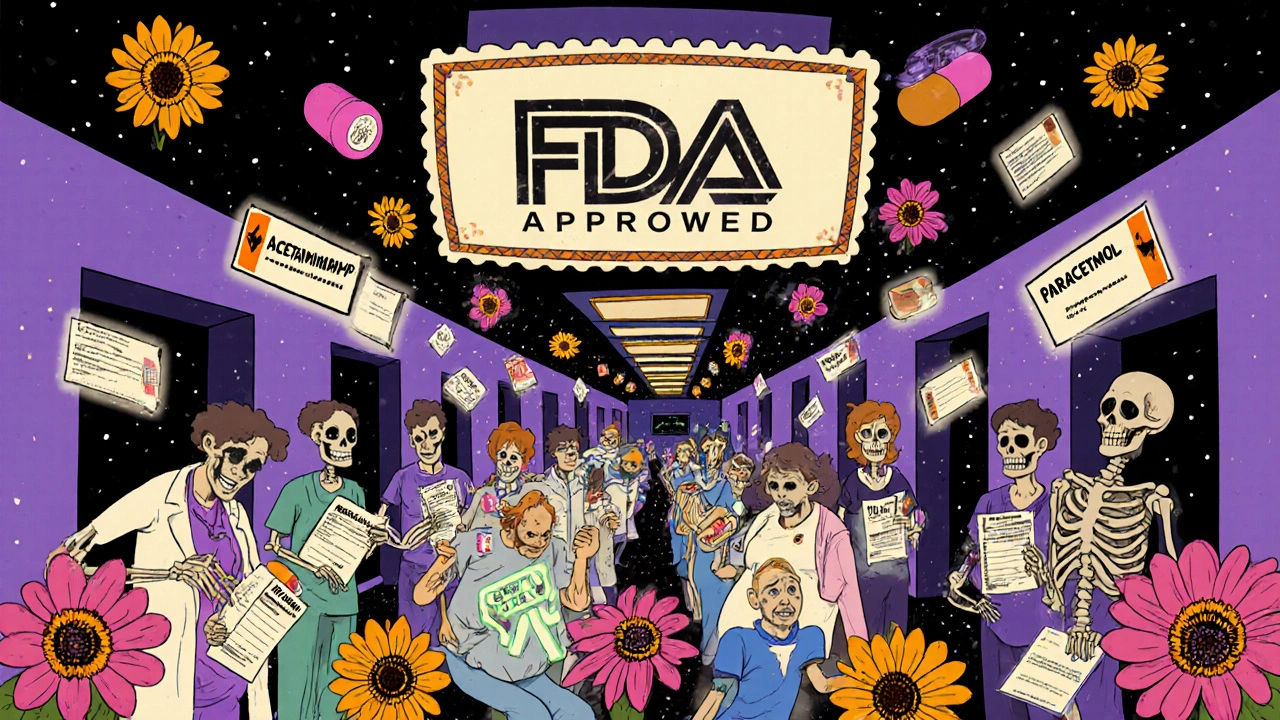Why Your Medicine Has Two Names
Ever noticed that your prescription says albuterol, but the box says salbutamol? Or that your painkiller is called acetaminophen in the U.S. but paracetamol everywhere else? It’s not a mistake. It’s the result of two global systems-USAN and INN-that exist to keep you safe.
Every drug you take has at least two names: a brand name (like Advil or Lyrica) and a generic name (like ibuprofen or pregabalin). The generic name is the real identifier-it tells doctors and pharmacists what the drug actually is, how it works, and what it’s used for. But behind that simple word is a complex, highly regulated process designed to prevent deadly mix-ups.
What Is USAN?
USAN stands for United States Adopted Names. It’s the official system used in the U.S. to assign nonproprietary names to drugs. Run by the USAN Council since 1964, it’s a partnership between the American Medical Association, the U.S. Pharmacopeia, and the American Pharmacists Association.
The goal? Make sure every drug has a name that’s easy to spell, pronounce, and remember-and most importantly, one that won’t be confused with another. A pharmacist in Chicago needs to know instantly if a script says metoprolol or metoprolol tartrate. A nurse in a rural clinic shouldn’t have to guess whether cefazolin is similar to ceftriaxone.
USAN doesn’t just pick names out of thin air. It uses a system of stems-endings that tell you the drug’s class. For example:
- -prazole = proton pump inhibitors (omeprazole, pantoprazole)
- -statin = cholesterol-lowering drugs (atorvastatin, rosuvastatin)
- -mab = monoclonal antibodies (adalimumab, rituximab)
The prefix? That’s mostly made up-something that sounds nice and doesn’t mean anything. But it’s chosen carefully to avoid sounding like any other drug. Companies submit up to six name options. The USAN team checks each one against existing drugs, trademarks, and even foreign language meanings. If a name sounds too similar to hydroxyzine or hydralazine, it gets tossed. That’s why it often takes 18-24 months to get a final name.
What Is INN?
INN stands for International Nonproprietary Name. It’s the global version of USAN, managed by the World Health Organization since 1950. Where USAN is U.S.-focused, INN is meant to be used everywhere-from Tokyo to Toronto to Johannesburg.
INN follows the same stem-based logic as USAN. But here’s the catch: it doesn’t always match. There are about 20-30 known differences between USAN and INN names. The most common ones:
- Albuterol (USAN) vs. Salbutamol (INN)
- Acetaminophen (USAN) vs. Paracetamol (INN)
- Rifampin (USAN) vs. Rifampicin (INN)
These differences aren’t random. They’re rooted in history. The U.S. kept using older names that were already common in American medical practice. Other countries adopted WHO’s newer standard. The result? A patient traveling from the U.S. to the U.K. might get a different name for the same inhaler. That’s not just confusing-it’s dangerous.
There have been documented cases where patients received the wrong dose because a doctor didn’t realize salbutamol and albuterol were the same drug. That’s why WHO and USAN work together: they share proposed names, review them side by side, and try to align. But they won’t force a change if it’s already deeply embedded in U.S. practice.

How Brand Names Are Made
Now, let’s talk about the name on the box: Prozac, Humira, Keytruda. These are brand names-marketing tools, not medical identifiers.
Pharmaceutical companies spend millions developing brand names. They want something that’s catchy, easy to say, and memorable. But they also need to avoid sounding too much like a generic name. A name like AlbuterolX would get rejected by the FDA because it’s too close to the generic.
Brand names often use:
- Short, punchy syllables (Viagra, Lexapro)
- Letters that feel modern or scientific (Zoloft, Truvada)
- Wordplay or emotional cues (Wellbutrin suggests well-being)
But here’s the real test: can you say it once and remember it? Can a nurse shout it across a hospital floor without confusion? Can it be easily translated into Mandarin, Arabic, or Spanish without sounding like a swear word or a disease? Companies hire naming consultants who run these names through linguistic, cultural, and legal filters. One wrong sound in Brazil or Japan can sink a billion-dollar product.
And even after all that, the brand name still has to be approved by the FDA and trademark offices. It can’t be misleading. You can’t name a blood pressure drug QuickFix if it takes weeks to work. The name has to reflect the drug’s function without promising miracles.
Why This System Matters
Think about this: in the U.S. alone, medication errors cause about 7,000 deaths each year. A big chunk of those come from name confusion. Two drugs that sound alike-Hydralazine and Hydroxyzine-can lead to someone getting a sedative instead of a blood pressure drug. That’s not hypothetical. It’s happened.
USAN and INN exist to stop that. The stem system means a doctor can look at a name and know the drug’s class without checking a reference. If it ends in -virdine, it’s an HIV drug. If it ends in -cillin, it’s a penicillin. That’s lifesaving in an emergency.
Even better, the system adapts. When new drug types came along-like antibody-drug conjugates or gene therapies-the WHO and USAN didn’t ignore them. They created new stems. In 2021, they updated the rules for monoclonal antibodies to include newer formats like bispecifics and Fc-modified antibodies. That’s how you keep a 70-year-old system relevant in a world of CRISPR and mRNA vaccines.

The Real-World Impact
Every year, around 350-400 new drugs need names. About 65% of them will never reach the market. But the USAN Council still assigns names-because a drug that fails in Phase 3 in the U.S. might still be approved in Europe. That name stays in the system, ready to be used elsewhere.
Companies spend $100,000-$500,000 on naming alone. Why? Because a bad name can cost more than the R&D. A name that’s hard to pronounce? Patients won’t refill. A name that sounds like a disease? Doctors won’t prescribe. A name that’s already trademarked? Lawsuits. A name that’s too similar to another drug? The FDA blocks it.
And it’s not just about safety. The naming system supports generic drug competition. When a brand like Lipitor expires, the generic version is called atorvastatin. That’s the same name used by every manufacturer worldwide. It’s the reason you can buy a 30-day supply for $5 instead of $300.
What’s Next for Drug Names?
The biggest challenge ahead? Naming drugs that don’t fit old categories. RNA therapies, cell therapies, microbiome modulators-these don’t have clear mechanisms like “inhibitor” or “antibody.” How do you name a treatment that reprograms your immune cells?
USAN and WHO are already working on it. They’re testing new stems for gene therapies and oligonucleotides. They’re consulting scientists, regulators, and even AI tools to predict naming conflicts before they happen.
One thing’s certain: as medicine gets more complex, the need for clear, consistent names gets even more urgent. The system isn’t perfect. But it’s the best we’ve got-and it’s saved countless lives by making sure you get the right pill, at the right time, with the right name.